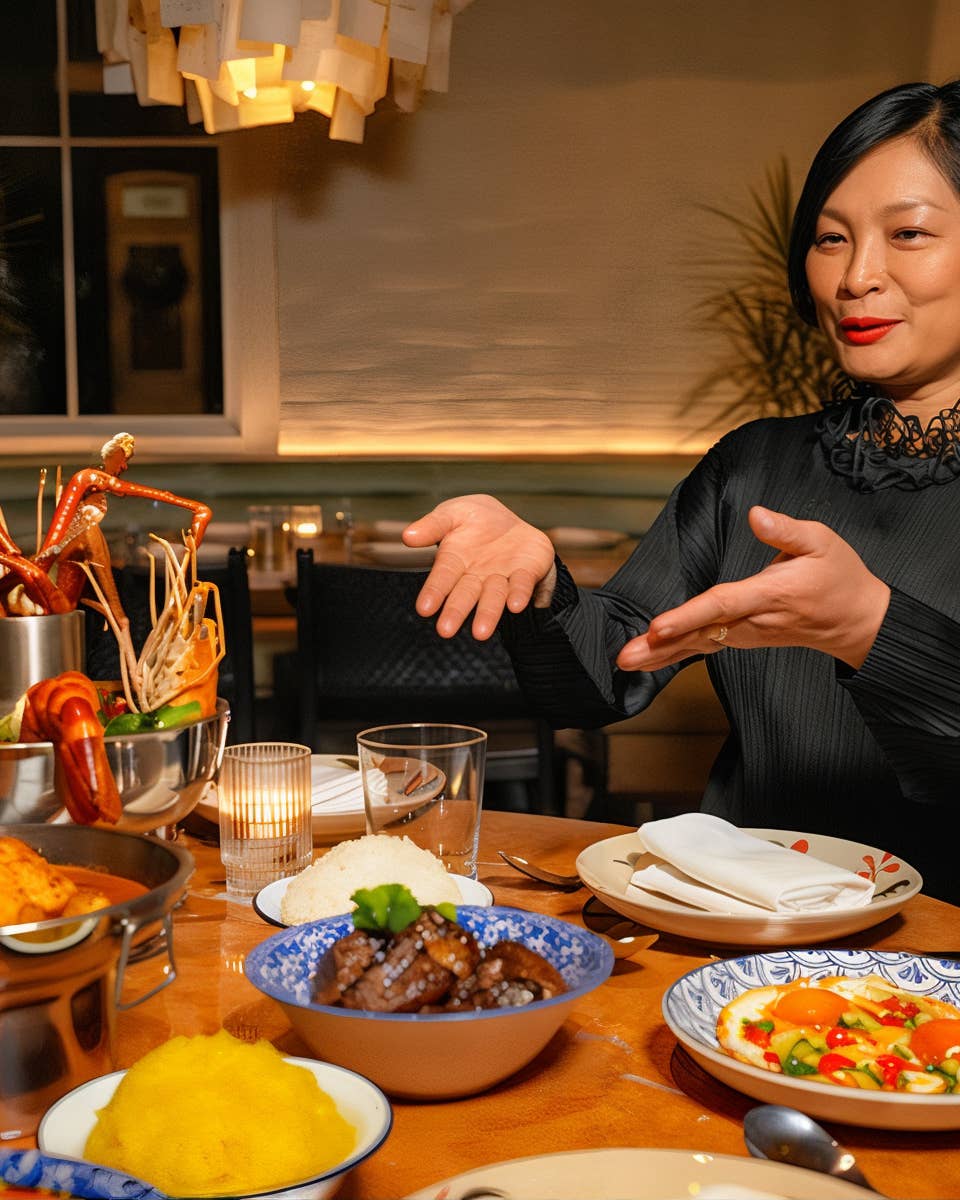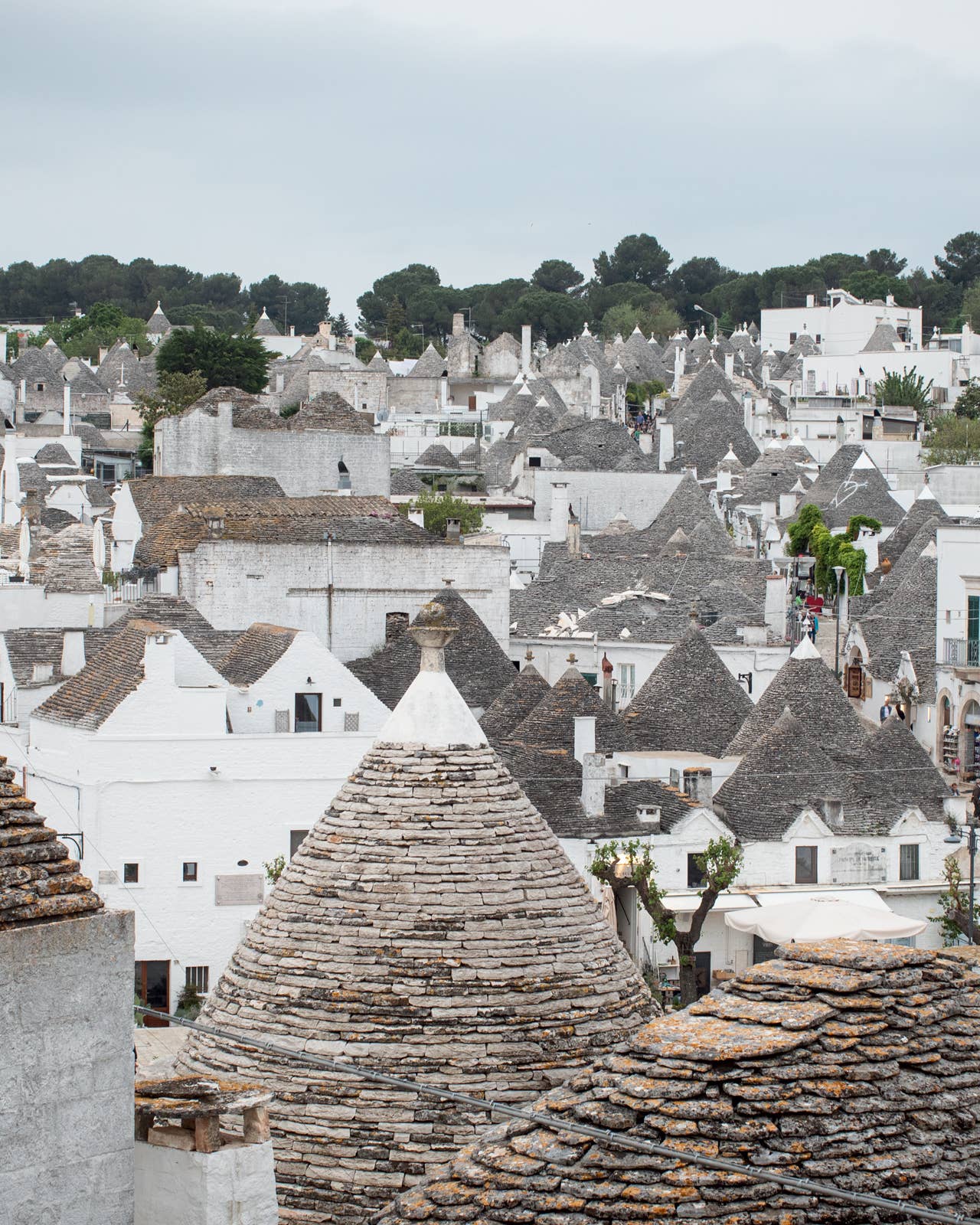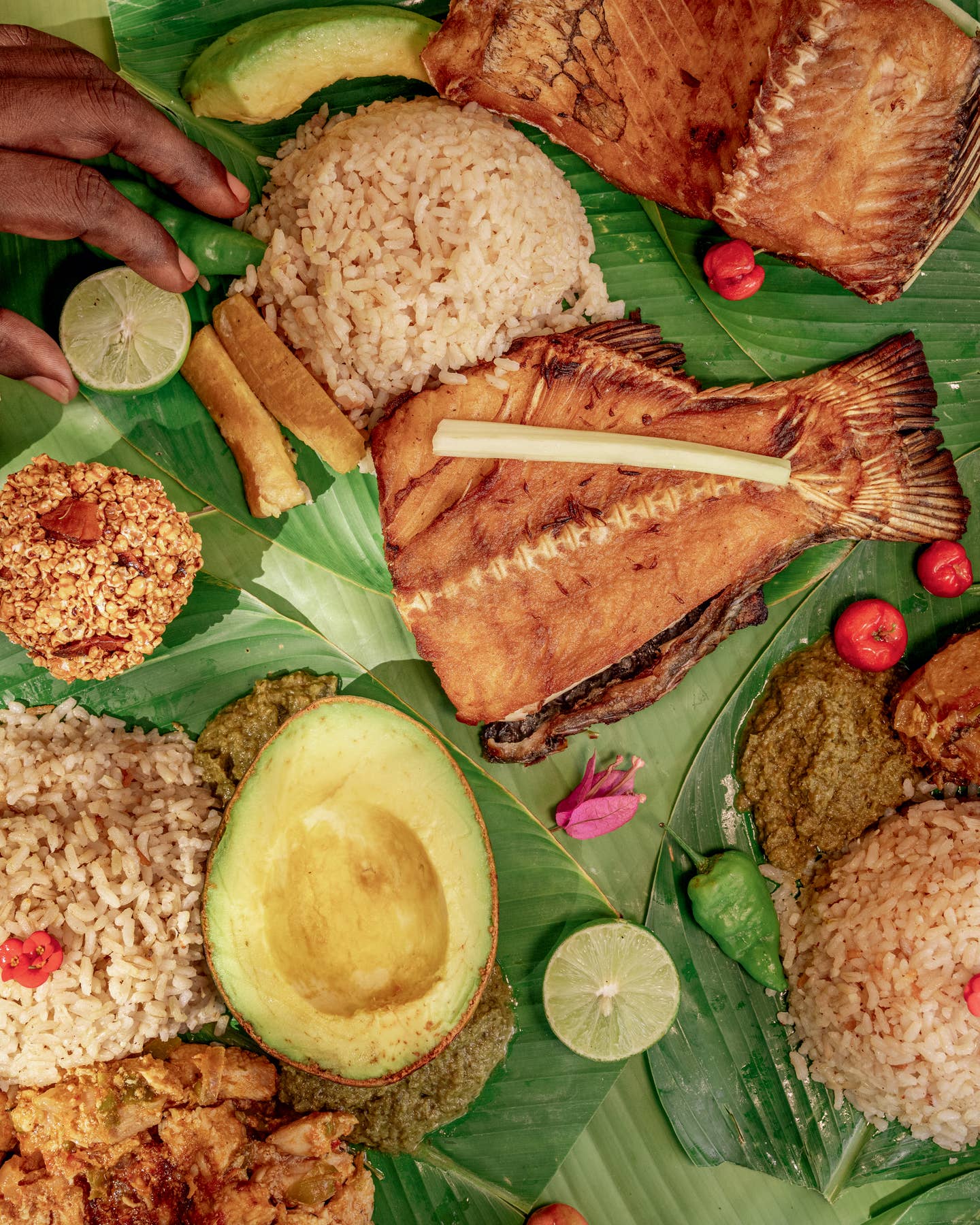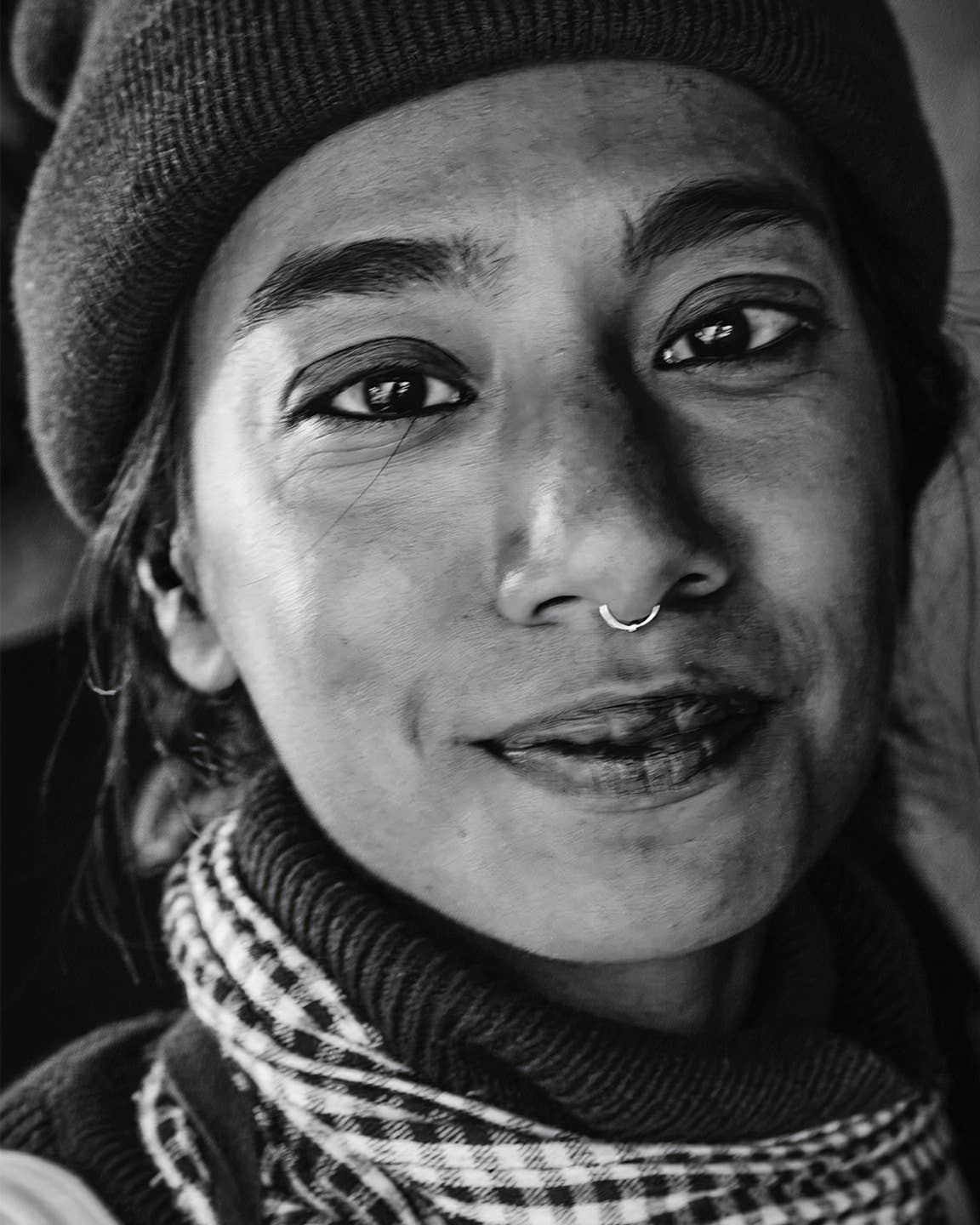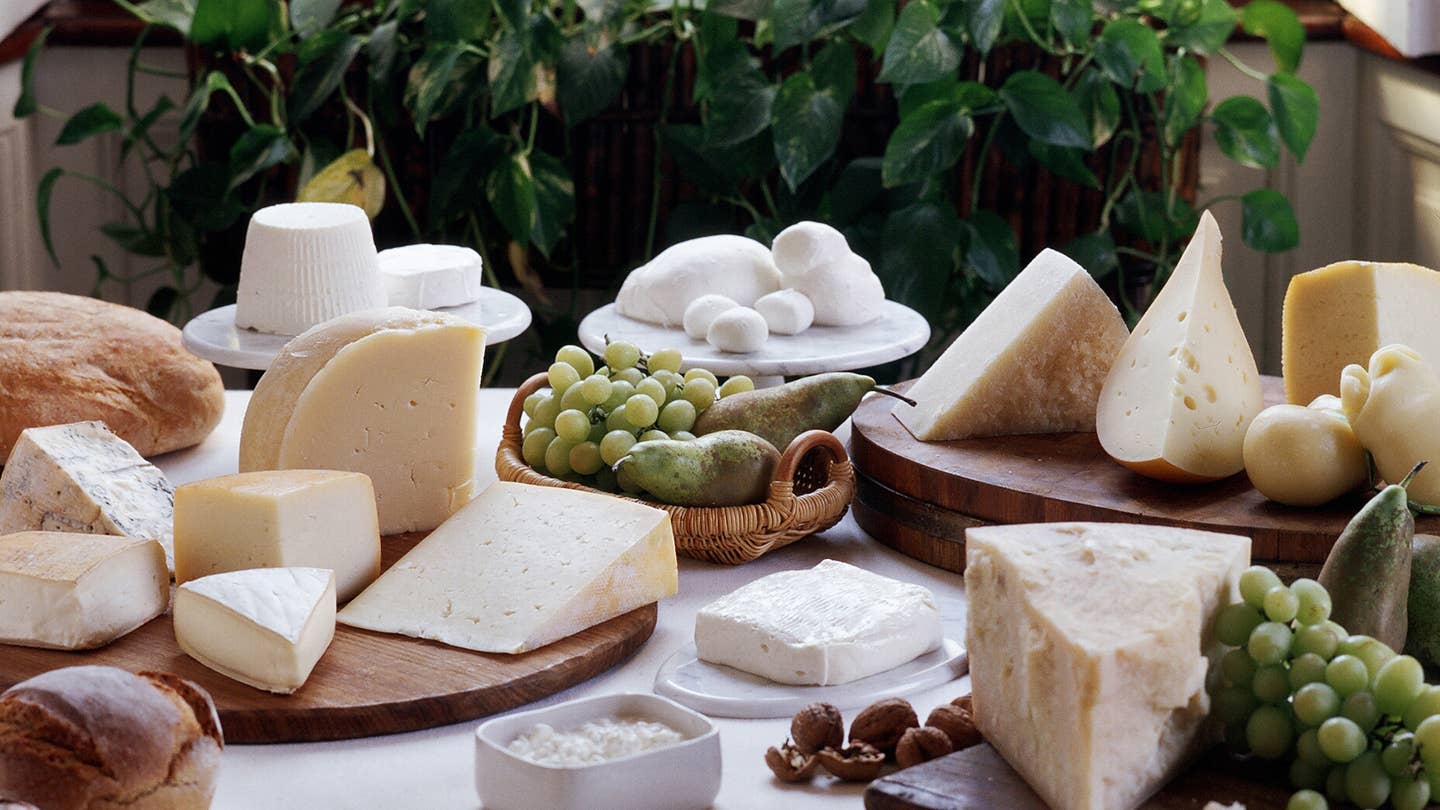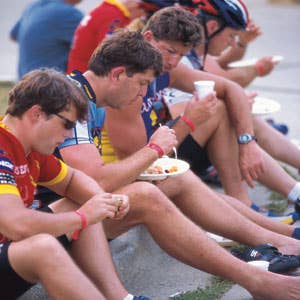
Eating Up The Road
To my left, cornfields. To my right, acres of soybeans. A hot yellow Iowa sun burns above. Around and mostly ahead of me are my fellow cyclists, a rolling city of some 10,000, on the Des Moines Register's Annual Great Bike Ride Across Iowa. We are all shapes and sizes, from bronzed and lean to pale and pudgy. There are grandfathers among us and small children, bankers and salesmen and carpenters, secretaries and doctors. There are people with prostheses on this ride; I've seen unicycles, ground-skimming reclining bikes, tandems, and a Scottish terrier in a tiny red helmet, observing the road from a front basket. Biking teams have pedaled past in their finery: Team Tutu, pink and yellow tulle billowing from helmets and waists; Team Spam, named for the cans of spongy pink meat glued to their helmets; Team Cheese, with wedges of Styrofoam swiss tacked to theirs. We all have a common goal, though—to ride roughly 500 miles in seven days. And we are all very, very hungry.
Luckily, the good people of Iowa provide. The route for this river of bikes changes every year, but its banks always sprout with food. Farmers set up card tables in their driveways and sell cookies, lemonade, rib-eye sandwiches, and roasted hog. Church ladies put on huge pasta dinners and bake thousands of pies. Towns—even towns so small that they're not much more than a grain elevator and a water tower—turn over their main streets to breakfast burritos, waffles, roasted corn, bratwurst, and that savory, crumbly Iowa twist on the hamburger called a loosemeats sandwich. Hand-lettered signs along the road announce the food up ahead: "Drink our floats⁄ Pet our goats"; "Grandma Murt didn't die⁄Half a mile to her pie".
This movable feast got its start in the summer of 1973, when John Karras and Donald Kaul, two writers for the Register, thought they'd tool across the state on their bikes in search of local color. They put an announcement in the paper inviting anyone who felt like it to come along, and to their amazement nearly 300 people showed up. RAGBRAI, as the ride is known, is now the largest multi-day bike ride in America, drawing half its riders from Iowa and the rest from all over the nation and 11 different countries—yet it's still so free in spirit that it has been called "Woodstock on Wheels" and "a marathon crossed with Mardi Gras".
Just past dawn on the first day, I set off from Sioux Center, near Iowa's northwestern border. I'm positively flying along. Those months of training have paid off! People are sitting out on their neat, pretty lawns, waving and cheering. Then bikers start passing me. Old people. Fat people. So many cyclists whiz by me that their wheels sound like rushing water. Oh, well, no matter. RAGBRAI is not a race. The whole point is to enjoy the ride—the scenery, the people, the food. In Orange City, a Dutch town 11 miles down the road, I breakfast on poffertjes, plump pancakes no bigger than a quarter. Outside Woudstra Meat Market, I eat slivers of spicy air-dried beef and chat with a local woman wearing a white lace cap with upturned tips. She says she's surprised by many bikers she's meeting. "You know, you think, 'Oh, big city.' But they're people, just like us!"
I linger so long in Orange City that by the time I reach the next town, Alton, only crumbs are left at the pie table. This is a shocking development. Baking is practically a competitive sport in the land of the Iowa State Fair, and I assumed I'd find lots of fine pie. Clearly speed is called for. I zip out of Alton and pedal furiously alongside Team Donner Party, whose jerseys read, "We eat the slow ones." Then, from the top of the hill ahead comes a gravelly, sirenlike cry: "PoooOOORK CHAAAaawp!" I pull over. Next to a pink schoolbus painted with a pig's face sits a ruddy, smiling man wearing an apron printed with the words "Mr. Pork Chop". A former Iowa Pork Producers Association president, Paul Bernhard has been selling chops to RAGBRAI riders for 20 years, setting up along the route every day. His two grandsons grill the chops over pits filled with smoldering corn cobs, but—drat!—it looks like they're cleaning up. "You still got chops?" a plump, bearded biker asks Bernhard, fishing limp dollars out of his pocket. "Yep." "I love ya," says the biker. "I'll take two." But first, he points his camera at Bernhard, who obligingly tucks in his chin and blasts out the call. Suddenly some bikers in line bellow back. "PoooOOORK CHAAAaawp!" Bikers passing on the road let loose, too. It's like elephants trumpeting on the veld. "I got thousands of pictures of me with my mouth open," says Bernhard. "Luckily, I got a good-lookin' mouth." As I sink my teeth into my own crusty-edged, juicy chop, Bernhard waggles his eyebrows at me and adds, "I got a pig tattooed on my rear, too, but you ain't seeing it."
Around mile 30, my bike saddle begins to bite me, and it's so hot that the asphalt is sticking to my tires. I stop in shady Granville (population 300), where exhausted bikers are flopped like boneless chickens on the lawns, and talk to an ancient farmer in a deck chair. In a papery voice, he tells me that he was born and raised in this town and grew corn and soybeans here for nearly 50 years. He was up at six to see the first biker go by, he says. Every time a rider passes, he lifts his hand and calls out, "Have a nice ride, now."
It's 2 p.m., and I'm ravenous. I've been told that Beekman's ice cream stand, another fixture on the ride, uses a 1913 Titan gas engine to power the dasher in one of its old-fashioned wooden ice cream barrels. When I hear a loud spluttering, like a lawn mower with hiccups, I pull over—just in time to see the dasher emerge, covered in thick, satiny globs of vanilla ice cream. I'm dying to grab it and lick it clean, but childhood training asserts itself and I wait in line for my own cup of six creamy, pure-tasting scoops.
The entire town of Marcus, at mile 47, throbs with Bob Marley tunes and hundreds of Lycra-clad bikers milling around in their cleats, helmets off, tossing back Bud Lights and screwdrivers and checking each other out. I watch a couple of guys hoist a woman onto a bike outfitted with a blender and then proceed to make margaritas while she whoops and giggles. This is frat house RAGBRAI, the fun-loving, hard-drinking crowd who have a blast far into the night and somehow manage to get up and ride (with bloody marys in their water bottles).
I finally make it into Cherokee under a sky turned black with impending rain. At the campsite, thousands of tents are spread out like a carpet of giant gumdrops, and the storm pelts down. By the time the sky has cleared, all the nice church suppers are over. I eat a mediocre gyro from a nearby food stall.
After that first day, I began riding strategically, resisting my impulse to check out every little stand and pedaling as fast as I could. Mainly I was looking for pie, but along the way I found Myron Sikora's pillowy, caramel-topped cinnamon buns, too, which he was selling in his sister's driveway. I also found the Dahmses that way. They keep bees in their backyard, and in their garage I slurped down the last of their delicately flavored honey ice cream, feeling it soothe my steamy, aching body. At the Bensons' kettle corn stand, I had addictive popcorn glazed with sugar and salt. From Lee Crook, a big, courteous man surrounded by family members and smoking barbecues, I bought a sandwich of turkey "tenderloin", cut crosswise from the breast in a thick slab, marinated in red wine and soy sauce, and grilled. And I lined up for thin, nubbly-textured pancakes at the Chris Cakes stand—or should I say danced for them, because the cooks there flip the flapjacks at their customers from ten feet away. In green, hilly Buchanan County, in the eastern half of the state, I stopped at Nielsen's produce stand and devoured wedges of icy red watermelon, ecstatic to be eating a fruit other than the ubiquitous and tiresome banana. But pie was a different story. The good stuff seemed to disappear at dawn, and what I found were soggy, oozing slices beaten down by the heat.
Most of the bikers I talked to—at dinner, on the road, standing in line for food or a shower—had ridden RAGBRAI many times. Over and over, they told me how restorative the whole experience always is for them. A mortgage banker from Chicago said it made his shoulders come down and his neck unstiffen. "And it's not just the beer; it's the people of Iowa," he added. "They're what we all hope and dream we're about." Dozens of bikers had met their significant others on RAGBRAI, despite the dirt, sweat, and helmet hair. One woman said she told her future husband, "If you can love me like this, you'll love me forever." So when I stopped at the Little Brown Church, near Nashua—made famous by the 1857 William Pitts hymn "The Church in the Wildwood"—I wasn't entirely surprised to see two beaming cyclists emerge, just married, she with a fluffy veil on her helmet and he with a pink rose corsage pinned to his jersey.
One day, I drove around with Jim Green, RAGBRAI's director, to get a sense of what it takes to feed, house, and entertain all these riders. Green, a lean, affable man with so much kinetic energy that he practically crackles, had a cell phone on his lap and an Iowa Highway Patrol radio by his side. He hollered into one or the other every two seconds as he hurtled around on side roads, orchestrating an army of volunteers at campsites and in town halls, churches, and fire and police stations all along the route (they outnumbered riders by a ratio of three to one). Green told me that some overnight towns earn between $100,000 and $200,000 during RAGBRAI, and even the small pass-through towns can take in $7,000 to $8,000 in a matter of a few hours. "That's not the important thing, though," he said. "The important thing is that these communities see that when they work together, they can accomplish anything." Towns have managed to pave roads, rebuild firehouses, and buy books for their public libraries with their RAGBRAI money.
Charles City teemed with giant street parties; what seemed like its entire population was out, looking delighted to see us and also slightly stunned. I ended up at a Knights of Columbus spaghetti dinner. "So glad you could come!" said the elderly man at the door to me, tipping his head gallantly and making me feel as though I were freshly showered and in a summer dress instead of sticky bike gear. The Knights had crisscrossed the ceiling of their hall with swags of white paper and hung twinkling strands of white lights down the walls, and they'd made buttery garlic bread and vats of good spaghetti with thick, meaty sauce. Afterward, two radiantly blue-eyed teenage girls brought us a basket of brownies, cakes, and cookies. A biker with a bristly white mustache played "Oh! Susannah" on the harmonica, and everyone clapped and then slipped out to watch the fireworks down by the river.
The most coveted dinners of all RAGBRAI, though, are those put on by Team Gourmet, a group from Illinois that travels with its own chef, a commercial grill, and coolers packed with venison, crab, and prosciutto. They set a theme for every dinner and often invite guests. I joined them on Sherwood Forest Night and marveled at the women gamely decked out in velvet gowns and the men in woolly Friar Tuck robes, despite the heat. Wayne Santi, a manager for a medical-equipment company and a self-taught cook, set out a banquet of braised lamb, pasta with grilled shrimp, a fat-free vegetable salad (several team members are on restricted diets), fabulous breaded pork tenderloins that had been tenderized with a two-by-four, very good red cabbage, and plenty of decent wine and beer.
At last, on the third day, I hit a pie mother lode in Fenton and was sitting in the town park exulting over my slices of cherry and rhubarb when the man across from me began raving about the raspberry pie he'd had back in Emmetsburg. He turned out to be Carl Voss, RAGBRAI's official pie judge and a judge since the mid- 1970s for the Iowa State Fair. How does one find RAGBRAI's best pies? I inquired. The first answer I knew already: "You have to get up early and ride fast." Then: "Always try to look at the whole pies. You can learn so much from a pie that's uncut." Voss, who was later to award first prize to that Emmetsburg pie, told me to keep an eye out for the rare ground-cherry pie, made with a gooseberry-like fruit that grows only in certain parts of the state. "The husbands won't let those pies leave the house," said Voss. On the final night of the ride, when I snagged a piece of tart-sweet, golden-crusted ground-cherry pie at a Lutheran church dinner, I tasted victory.
Our last day began with blinding, whipping rain and continued with hills so steep that some people had to push their bikes—yet I felt surprisingly strong and fast, and for the first time I kept up with the heart of the group. After a last stack of pancakes, I made it to the limestone bluffs of Bellevue and, below them, the Mississippi. Teams were gliding down to the water for the traditional communal dipping of the front tires, and I joined them. Tired and triumphant, having all ridden the same route yet with our own individual stories to tell, we eased into the river's sweet welcome.
Keep Reading
Continue to Next Story





